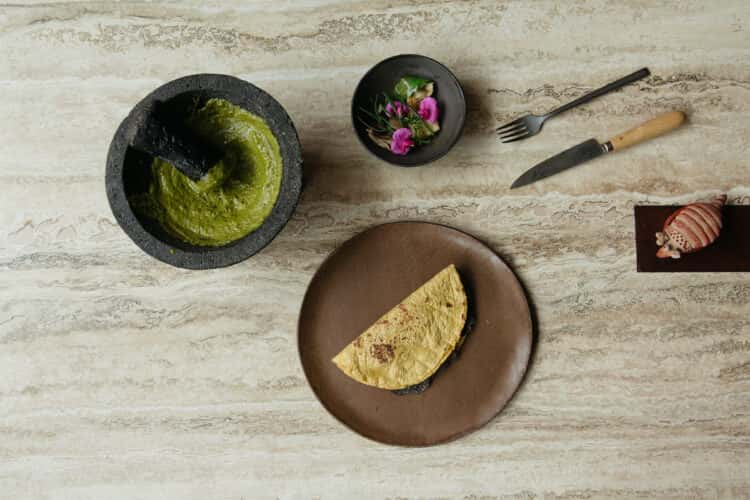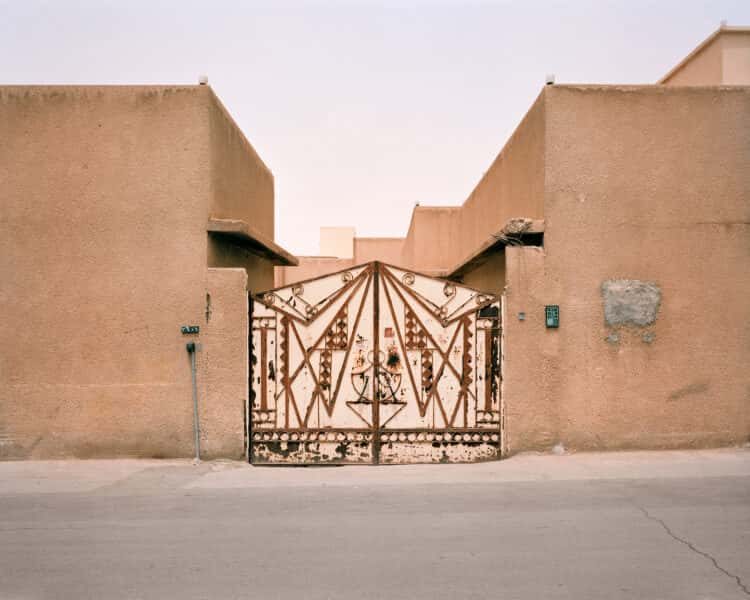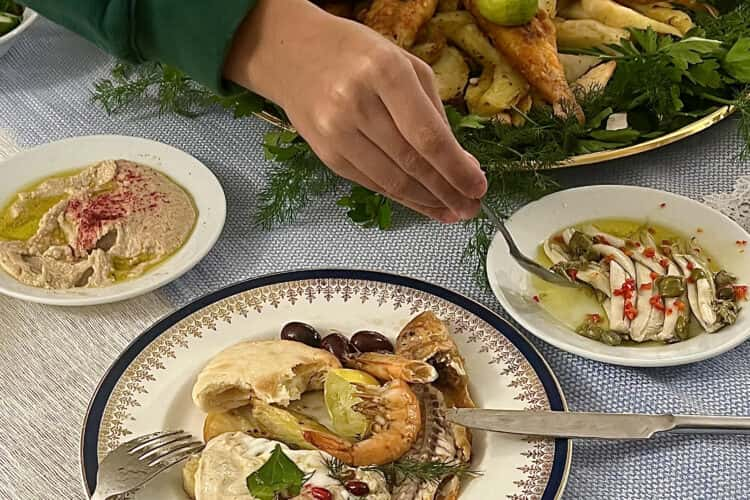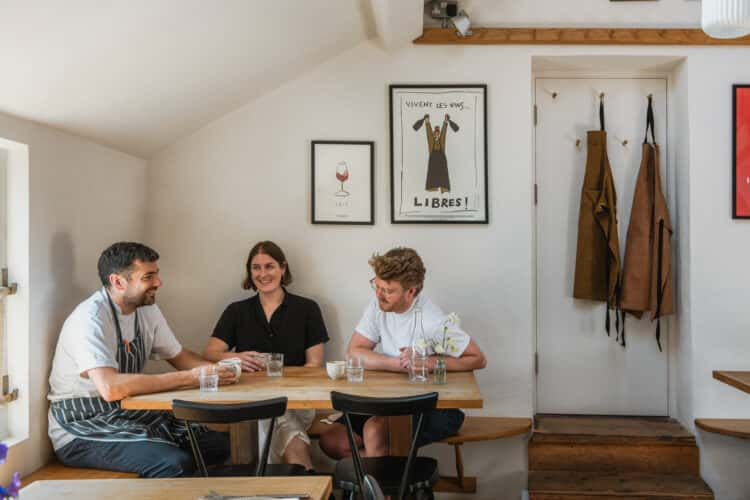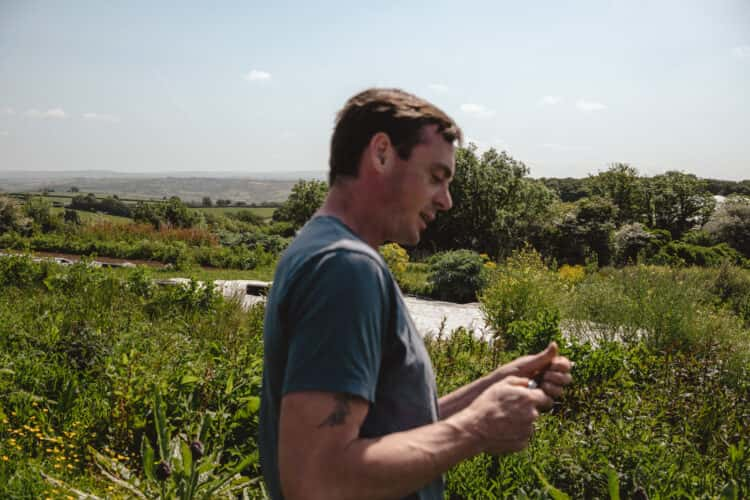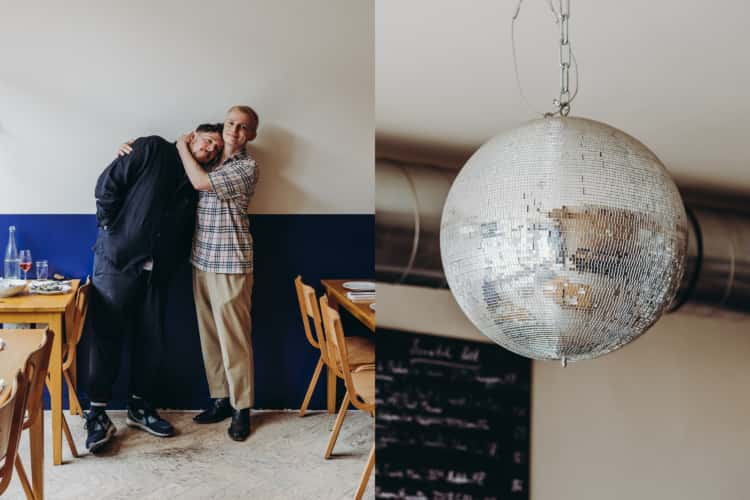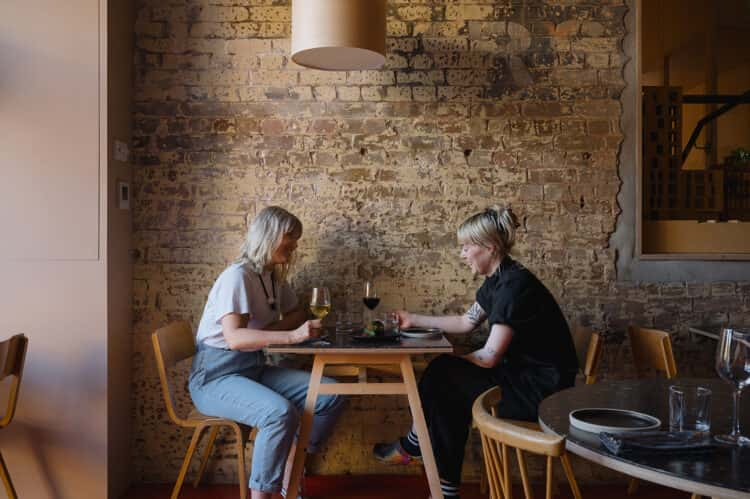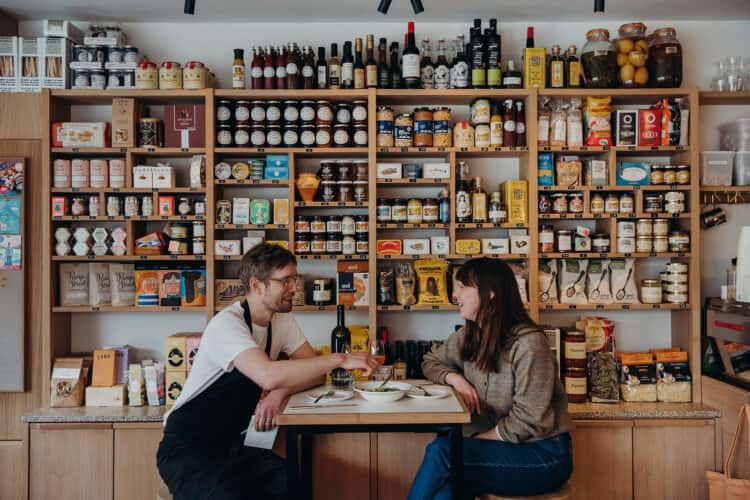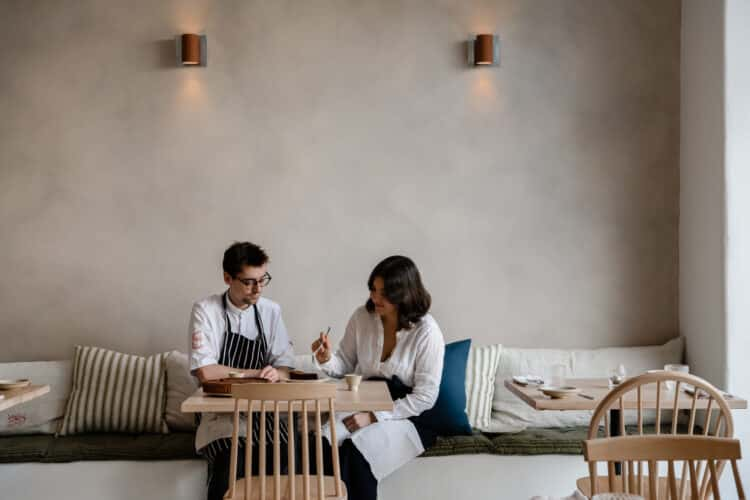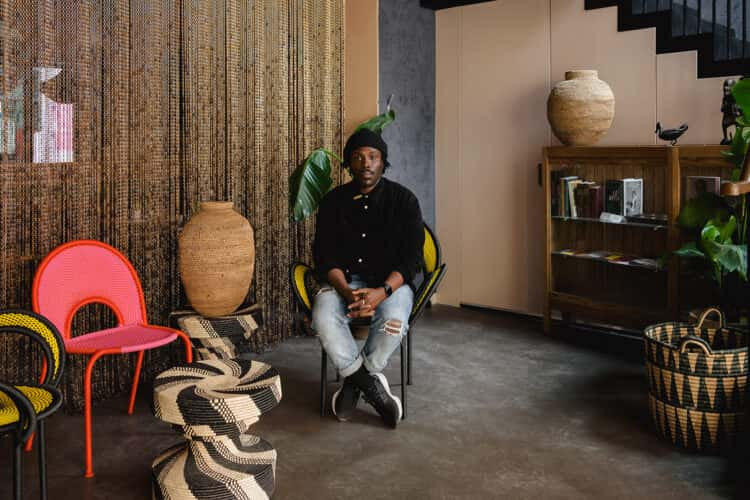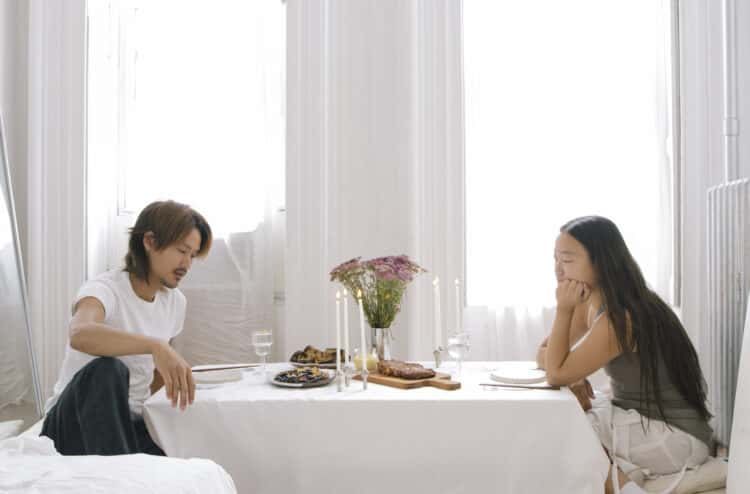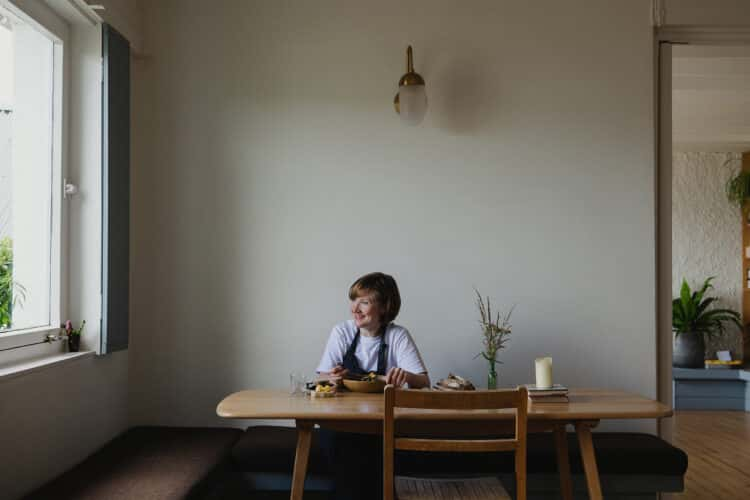Santiago Lastra on celebrating the authentic flavours of Mexico at his restaurant Kol, plus a recipe for cheese quesadilla with pistachio
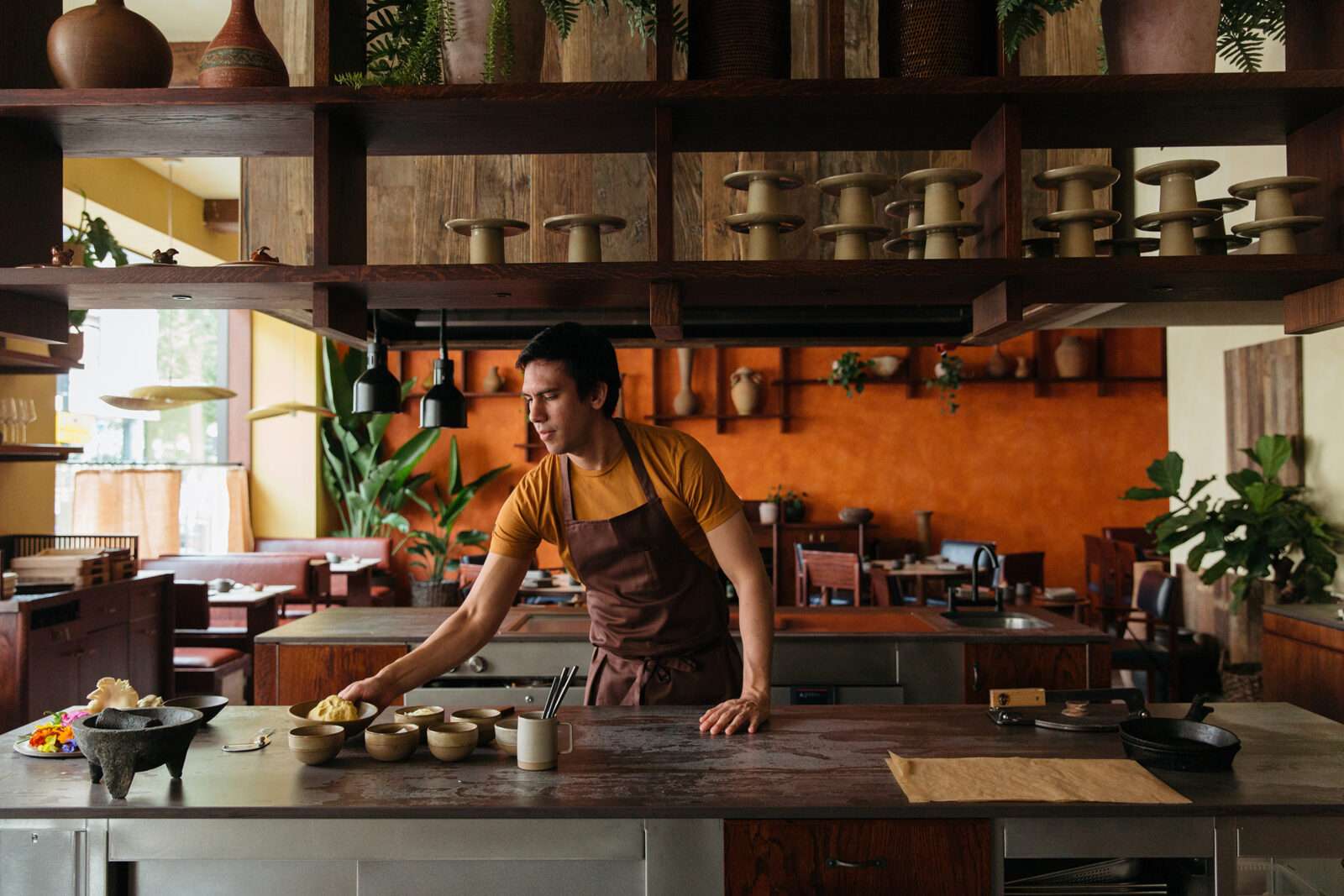
Santiago grew up in Cuernavaca, a small town outside Mexico City that was going through a period of considerable globalisation during his childhood. Fast food dominated the culinary landscape. Home cooking was something he rarely experienced; his early memories of food include a family tradition of pizza on a Tuesday. It wasn’t until age 15 – after an encounter with a Ritz cracker and a supermarket recipe – that Santiago began to cook for himself, quickly learning he had quite the knack for it. Such skill led Santiago to leave Mexico and nurture his craft in Spain, Demark and 25 other countries, where he would stay with locals and learn differing styles of home cooking around the world.
Santiago’s career-defining moment followed suit, when he was invited to open Noma in Tulum, Mexico. Returning to his homeland, he reconnected with his roots and revelled in authentic Mexican food for the very first time. This sense of authenticity is the inspiration behind his new restaurant Kol, where we sit down to discuss his unique experience of home cooking and the beauty of breakfast in his apartment in Hyde Park, west London – plus, he shares a recipe for quesadilla with truffle.
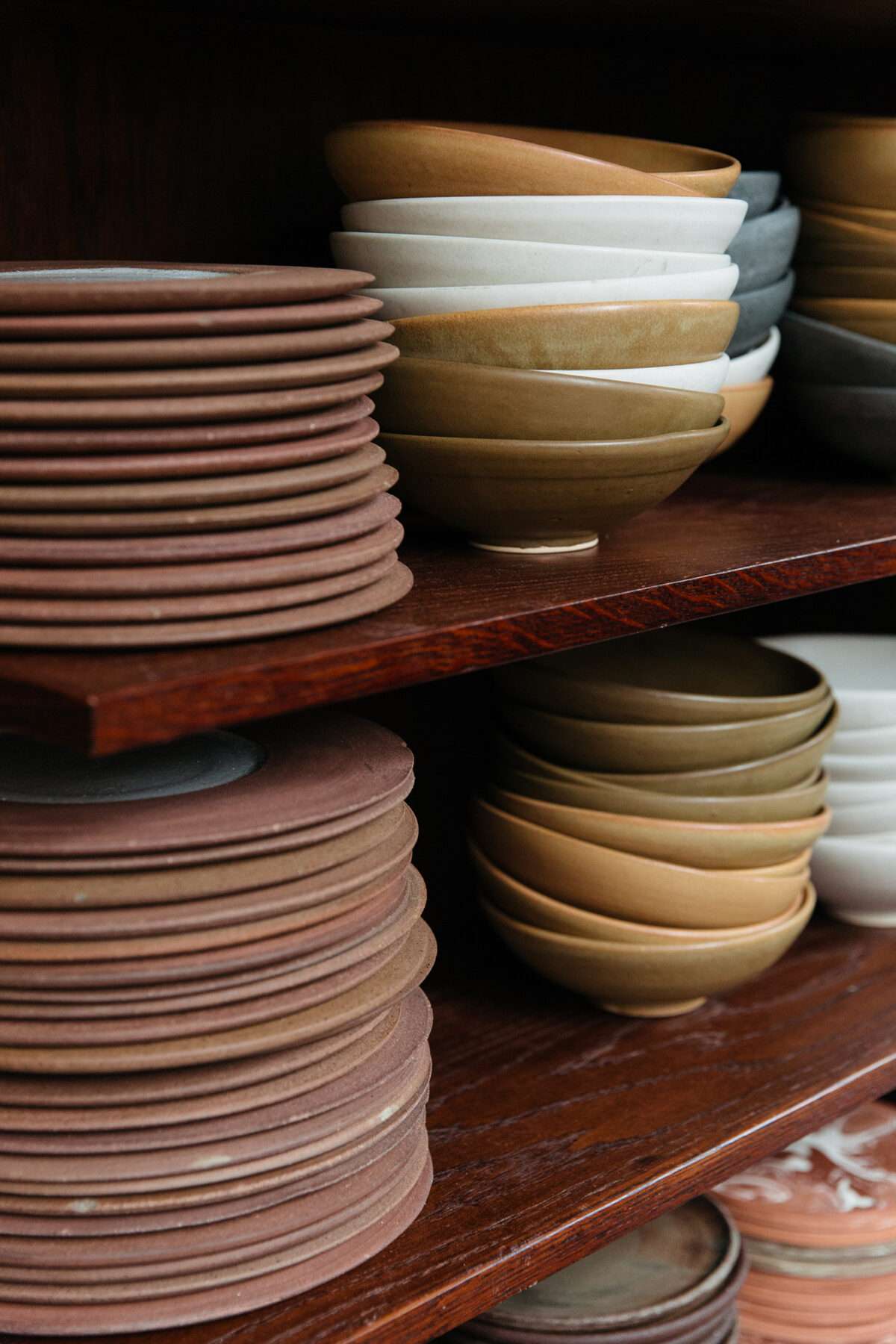
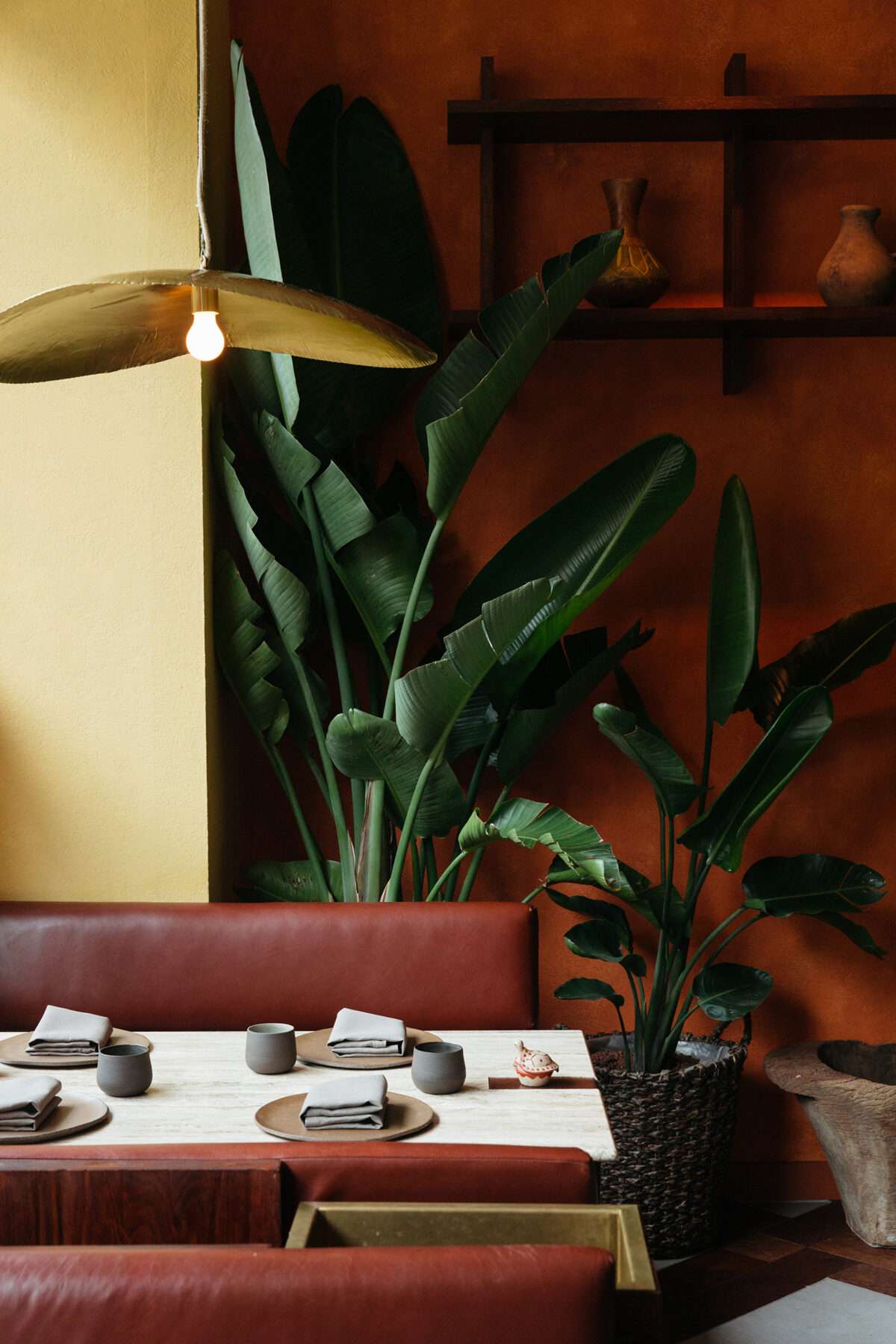
Santiago: “Cuernavaca is a place outside Mexico City with lots of new developments and holiday homes with swimming pools. It’s where a lot of people moved after a devasting earthquake in 1985. I’m from a generation that grew up with globalisation, when fast-food brands became really relevant and defined status. I didn’t see a cow until I was 18, in Spain. I wasn’t really in touch with authentic Mexican food.
“I do remember my grandmother would cook Spanish food – my family is from Spain – once every two months or so. She would do empanadas from Galicia with fish and olives inside – it would be like a big pie. The only other memories I have about good quality food from when I was growing up was when I was at my friend’s house. Their parents would do plates of pasta and things like that. My mum wasn’t able to make elaborate dishes as she was taking care of me and my brother.
“I really discovered cooking through curiosity. I went to the supermarket and bought Ritz crackers that came with a recipe for crab dip – I made it at home, and everyone liked it. I was 15 when I started working at an Italian restaurant in Cuernavaca and it was then that I felt I belonged in the kitchen.
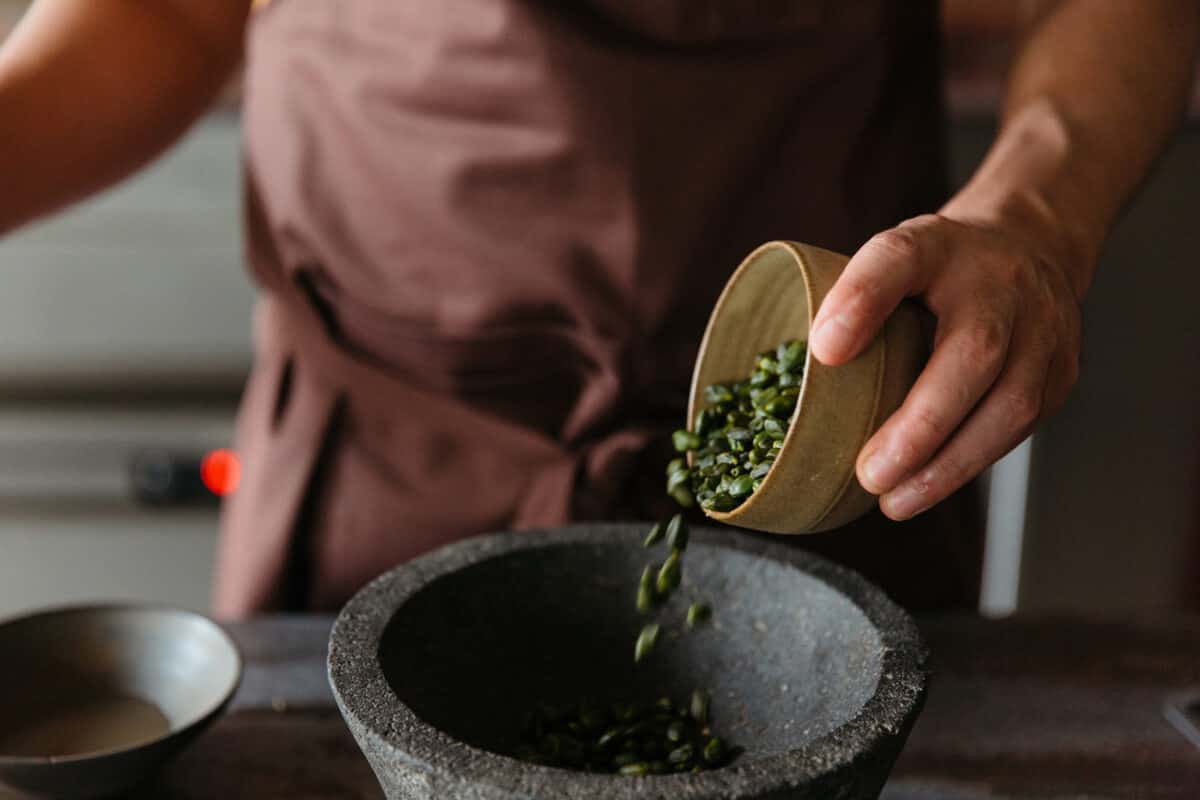
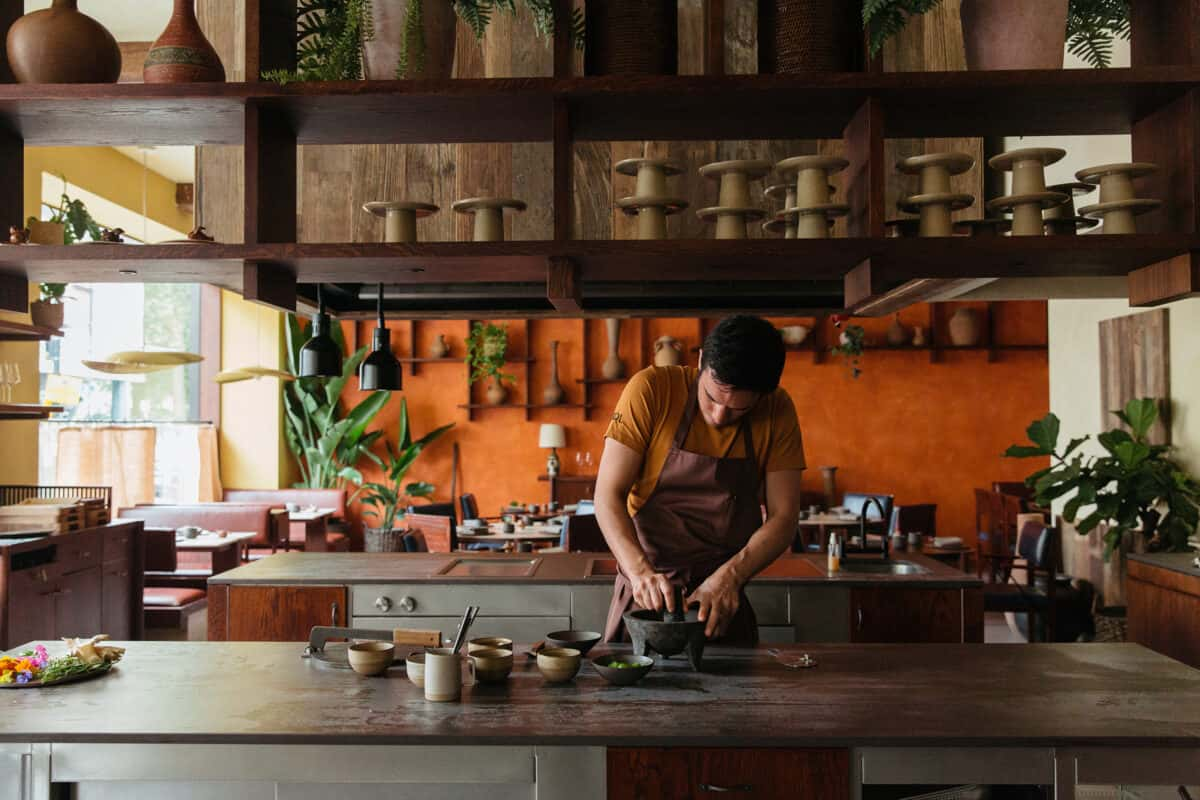
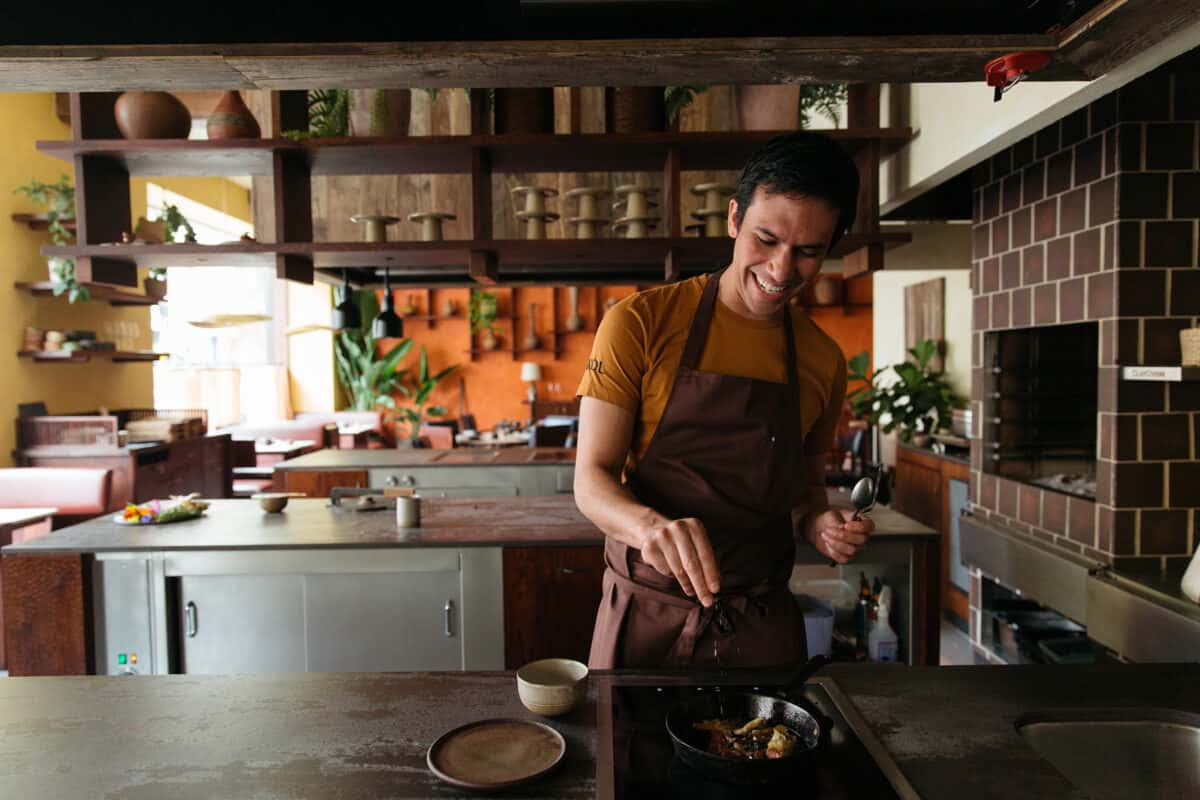
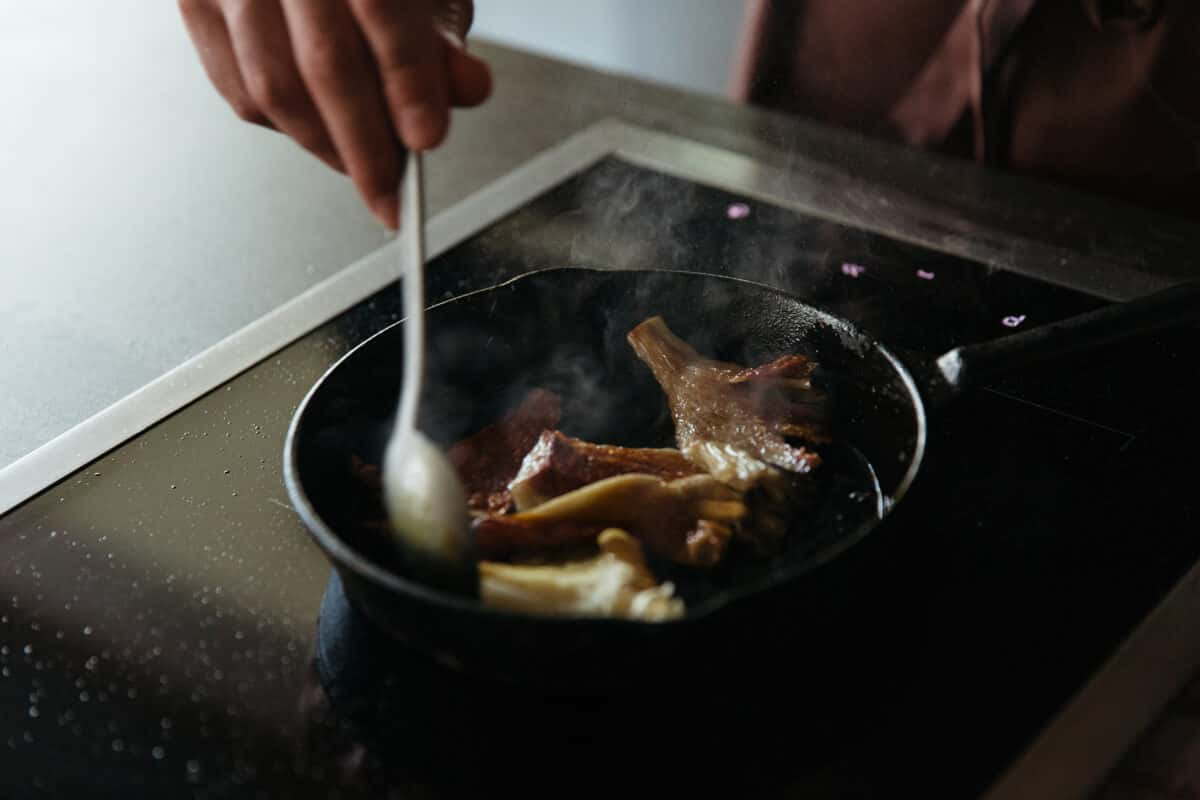
“At 18, I got the opportunity to go to Spain and work in a one-star Michelin restaurant in Pamplona. There, I met a woman who became like my second mum – she was a major chef and I stayed with her for two years. The first meal she cooked for me was really traditional Northern Spanish food: plates of different vegetables, beef cheeks with glaze and red wine sauce, eggs with truffle. Her food is the closest thing to home food for me. If I cook at my home, I will cook Spanish food like this.
“I experienced home cooking around the world during my travels; it was really important for me that I stayed with locals and made friends, and that we could cook together. I especially love Italy. I remember eating lasagna in my friend’s grandmother’s house, and even though it sounds cliché, it was one of the most delicious things I ever tried.
“When I was hired at Noma, my life changed. I got the opportunity to see Mexico with different eyes, make recipes and spend time with indigenous communities. For me, authentic food is about culture. What makes Mexican food authentic is when it’s expressed with the personalities of the Mexican people. We’re open, friendly, colourful, and fun. At Kol, we don’t do traditional Mexican food, we keep it authentic in a way that it’s humble. We focus on the flavours of Mexico: sour, sweet, fruity and spicy.
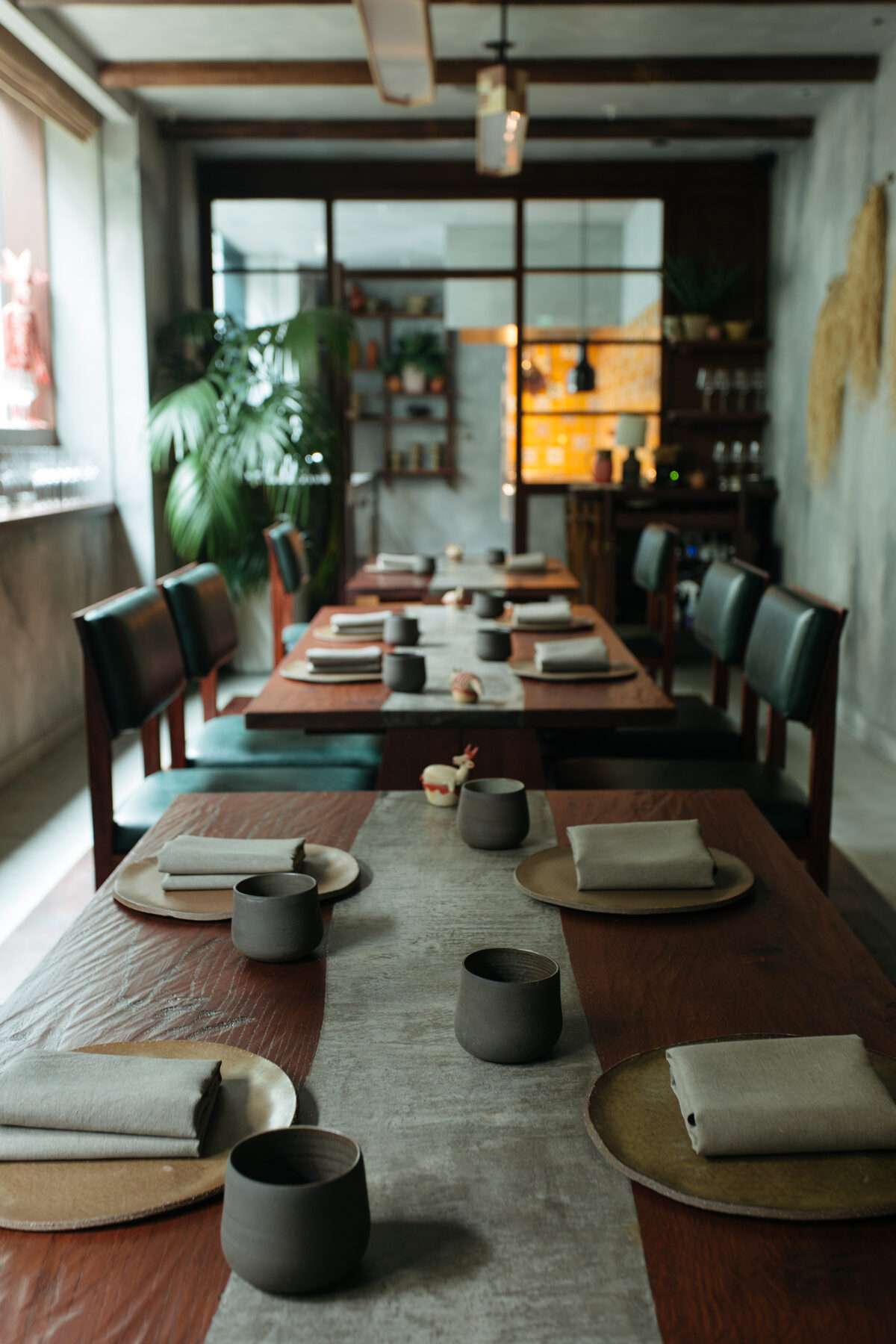

“I live with my brother near Hyde Park. At home, I don’t really make Mexican food – I would love to, but it’s too much work. However, if I have friends over, I will do Mexican; otherwise, I prefer making things that don’t use as many utensils – one-pot meals. I like to do a mixture of Spanish and Italian food – I’ll make paella, risotto, pasta, or Spanish omelette. I also make miso soup, it’s great and so easy. I try to keep it healthy at home. My fridge is full of vegetables. It depends on the season, but right now, I have cauliflowers, carrots – orange and purple – cucumbers and tomatoes.
“As I’m so busy working on a Saturday, Monday feels like my weekend, so that’s when I make something a little more complicated at home. I’ll eat with my brother if we’re both in; our favourite time to eat together is breakfast or dinner. For breakfast, my brother makes amazing pancakes that are perfect with bacon and maple syrup. Sometimes I bake sourdough bread in the morning, which we’ll have with cheese, eggs, and fresh juice.
“Breakfast is such a beautiful thing because the natural light comes through the big windows. You have all the leaves from the trees in sight and we have a balcony too – sometimes, we’ll have breakfast out there, especially in the summertime. Otherwise, we sit at the wooden table where we have a nice view of the garden.
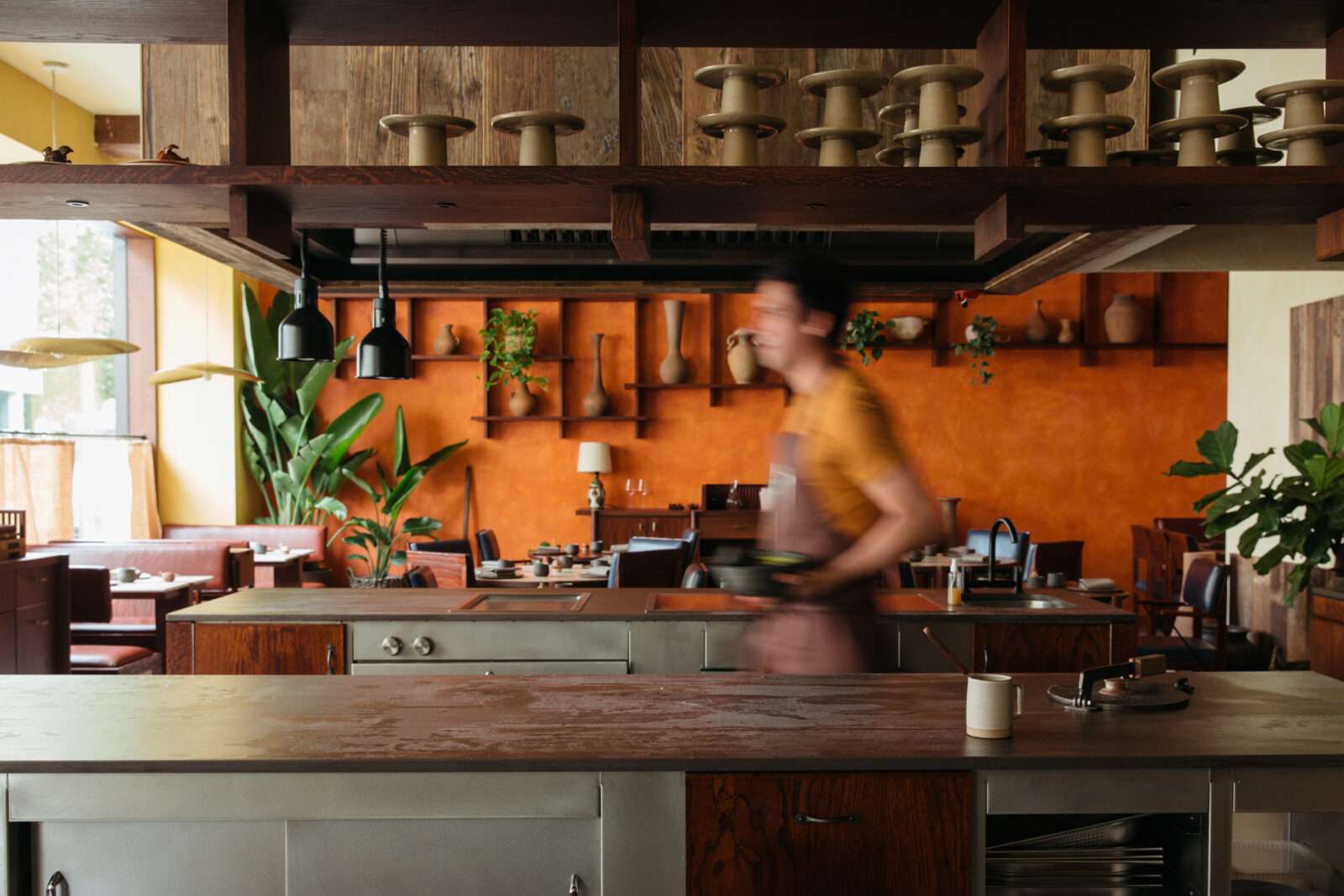
“In my kitchen at home, I have a stone pestle and mortar that is very sentimental. I brought it from Mexico and I like to make sauces with the seeds that I grind in it. I like touching organic things and it looks nice. And it’s easier to clean than a blender!
“I don’t use a lot of cookbooks but I really like food science. I’m reading something at the moment called Mouthfeel: How Texture Makes Taste; there’s another book called The Art of Fermentation, which is excellent – it contains lots of recipes for people to make fermented foods at home.
“At home, my approach to cooking is really different. What we do here in the restaurant can take two, three, four, days or even weeks to prepare. We ferment things, so the flavours that we develop here are very complex and take a long time to prepare. While at home, it’s very simple.
“My advice for people cooking at home is to not to be afraid. Understand what you like and then experiment with your favourite ingredients. And then just enjoy!”
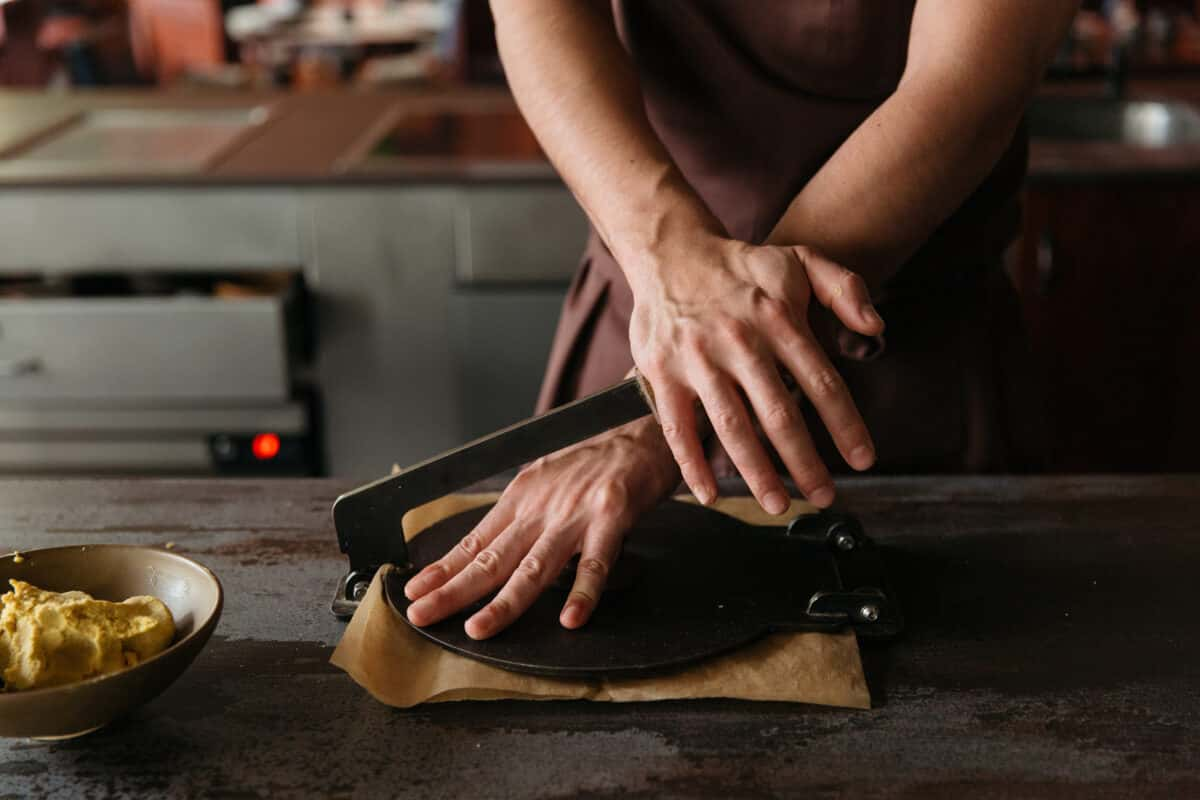
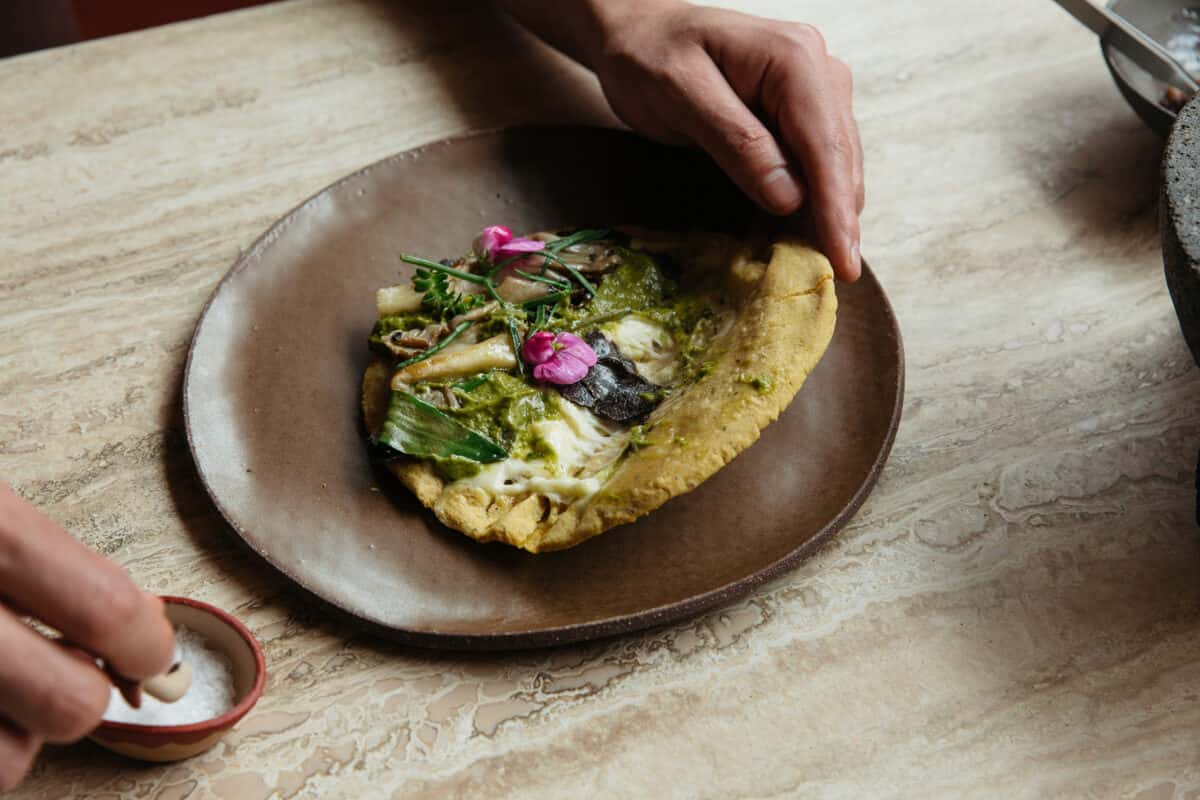
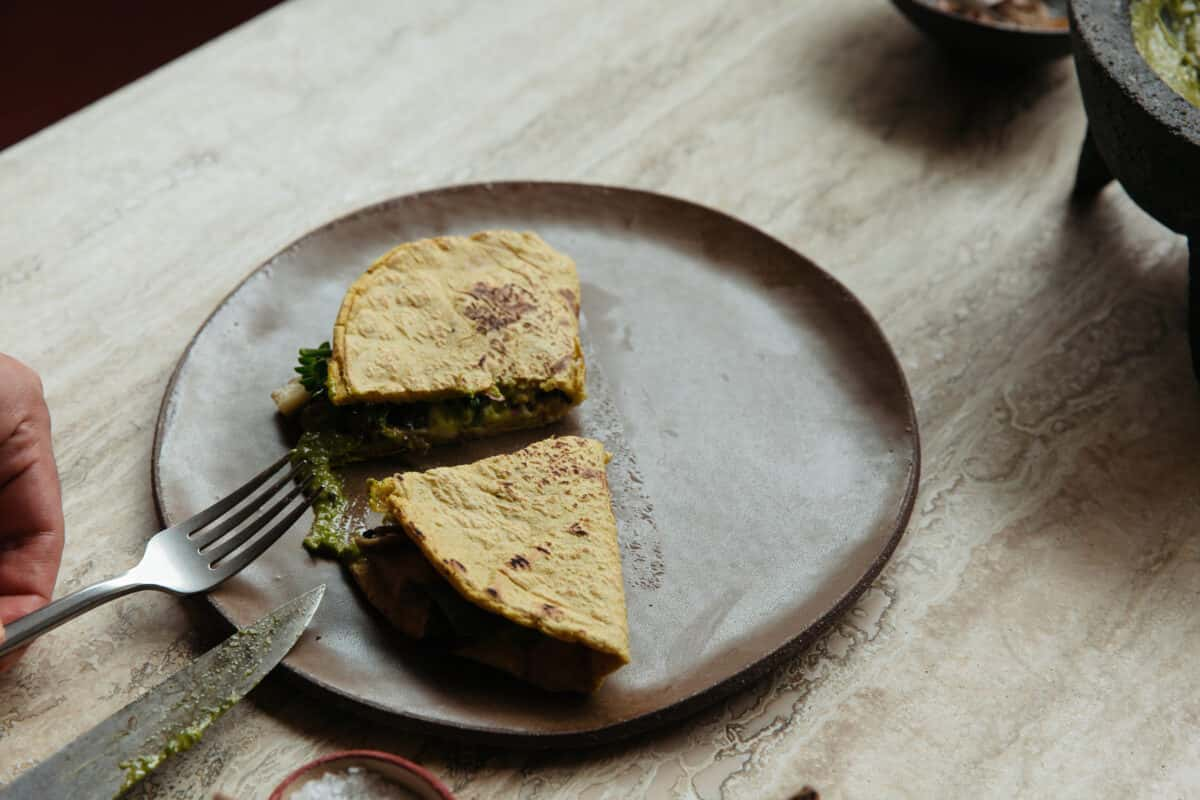
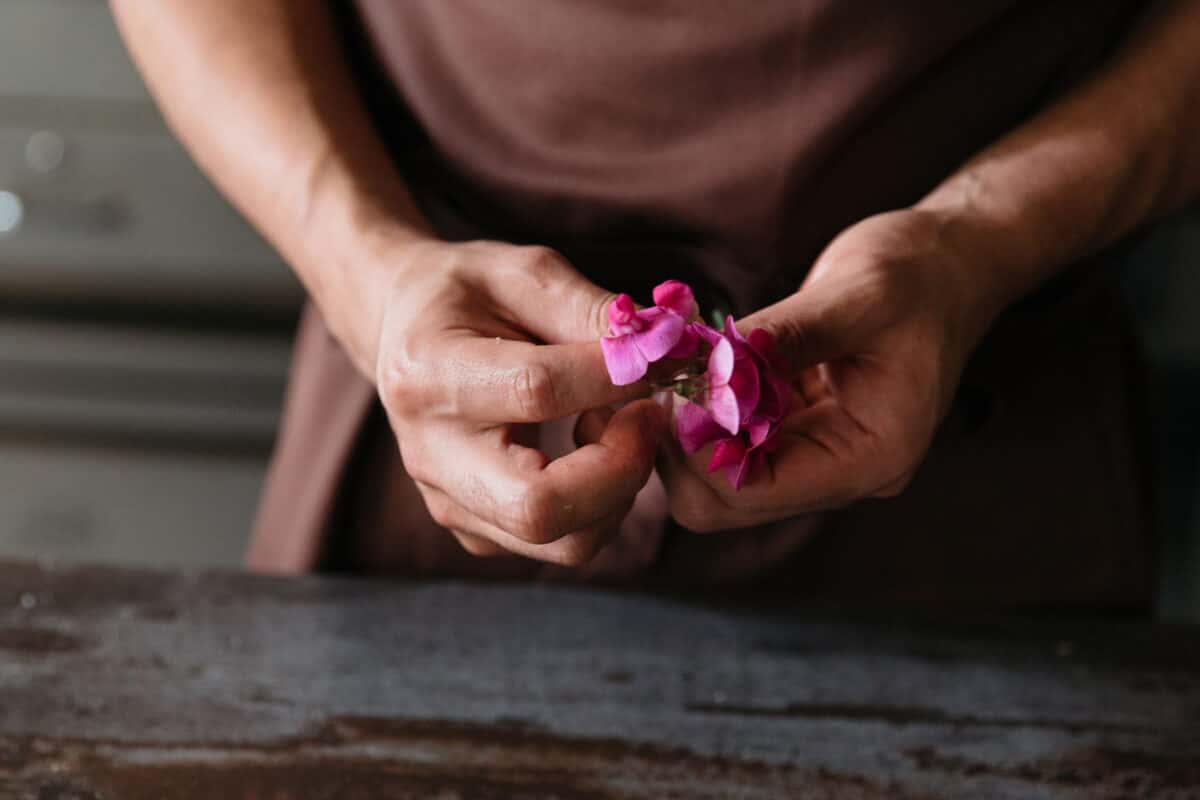
“I really miss quesadillas when I’m not in Mexico. I wanted to share a recipe that’s special and authentic, and two things that are really easy to get in Mexico are masa and cheese. I created this recipe with pistachio especially for The Modern House, but it was so good, next season I want to put it on the menu at Kol.”
Serves four
For the masa
250g Corn masa harina (or tortillas for wrap)
250ml water
Fine salt
For the filling
300g Oaxaca cheese per quesadilla (or mozzarella cheese slices)
12g truffle
For the quesadilla (per portion)
65g masa
35g cheese
3g truffle (optional)
For the sauce
200g green pistachios
5g scotch bonnet
20g truffle butter (or truffle oil)
50ml sour kombucha (or lime juice)
Garnishes
60g oyster mushroom
20ml olive oil
50g butter
100g seasonal herbs and flowers
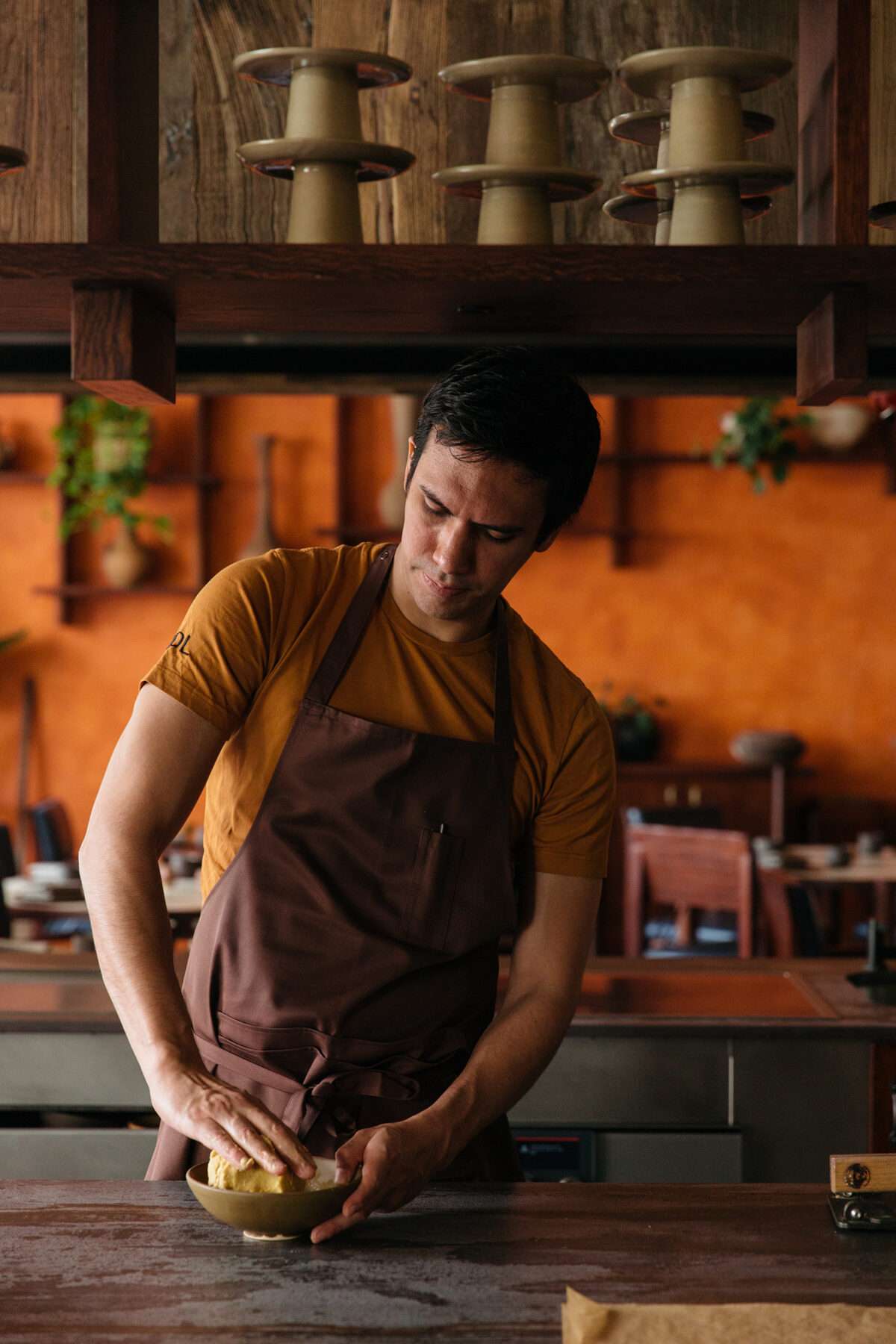
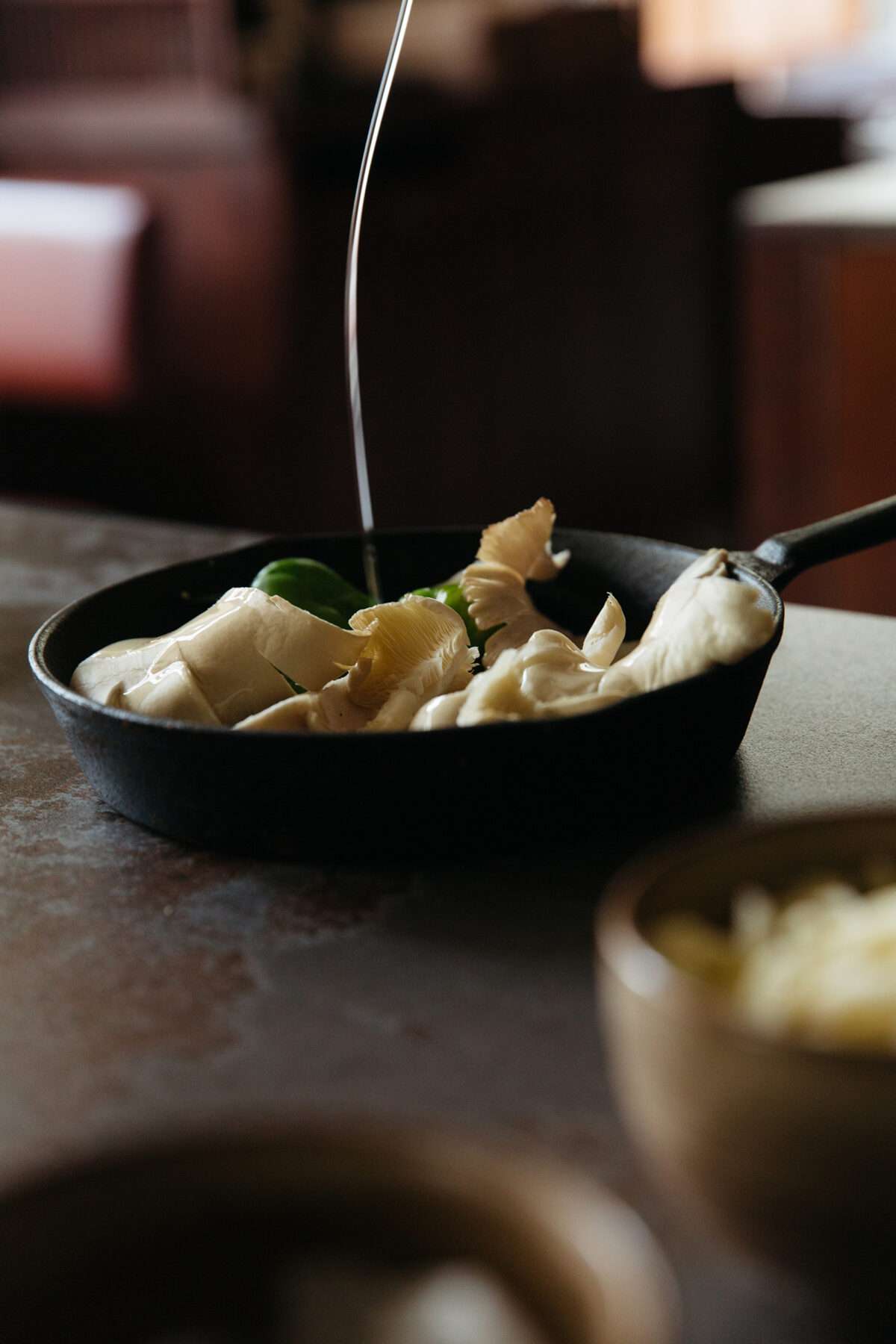
To make the masa, add the masa harina and water to a bowl and gently mix with your hands until there’s a smooth surface. Then, add a pinch of salt and put the masa to one side.
For the filling, pull the cheese into fine strings and slice the truffle. Place the fillings in the fridge to keep them cool until ready to serve.
Meanwhile, to make the garnish, roast the mushrooms with oil and butter. Keep the herbs and flowers in the fridge to keep them fresh.
Then make the sauce. Toast the pistachios in a pan and then blend together – I use a pestle and mortar – with the scotch bonnet, truffle, and sour kombucha.
Now, to make each quesadilla, take your masa and use your hands to make a small ball. Press it gently until flattened between two plastic bags – or parchment paper sheets – to make a tortilla. Remove from the paper and cook the tortilla in a medium-hot pan for 45 seconds; then turn the tortilla and cook for a further 15-20 seconds on the other side. Turn the tortilla one last time and gently press the centre to puff. Place the filling in the middle of the tortilla and fold it while still on the pan. Keep cooking it until the cheese melts and then take it out of the pan. Serve with garnishes and sauce.
